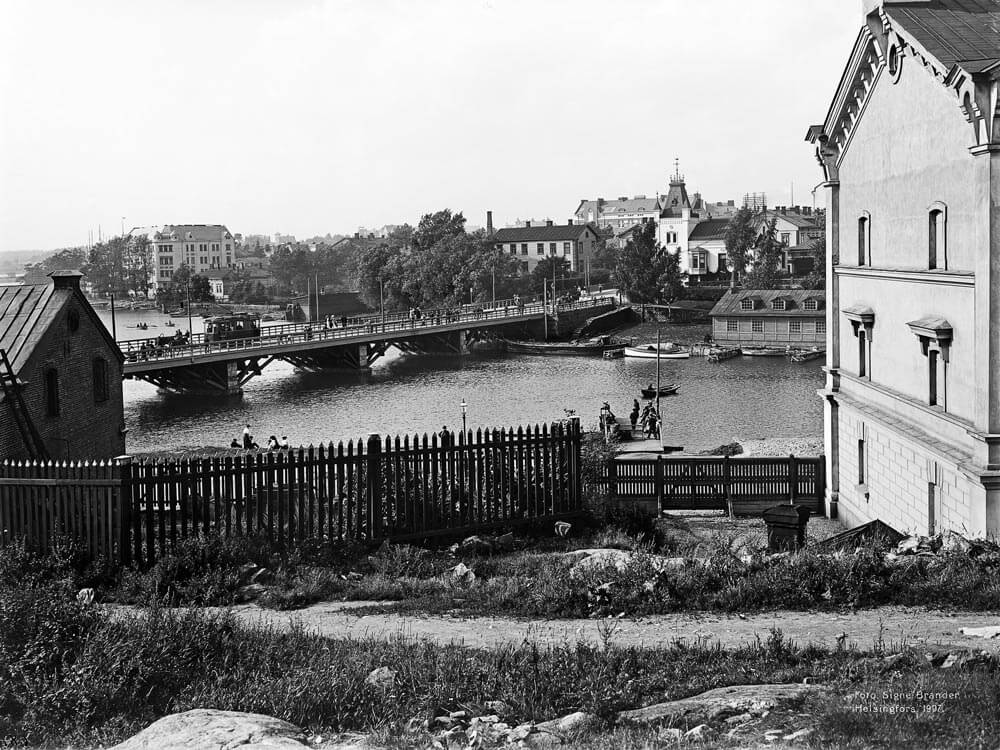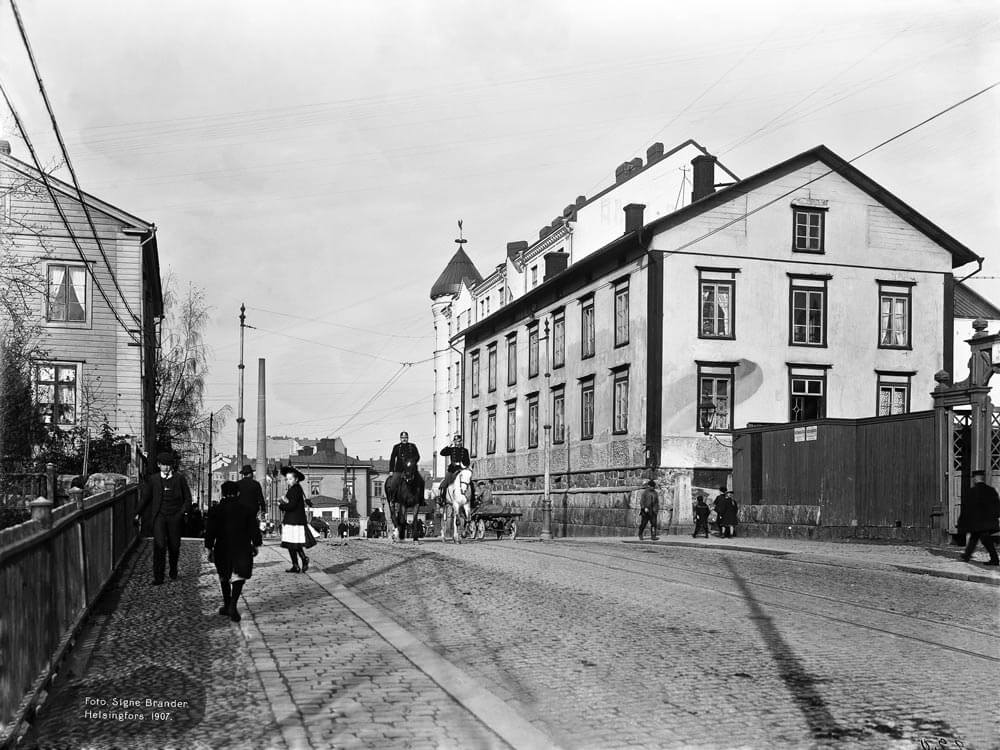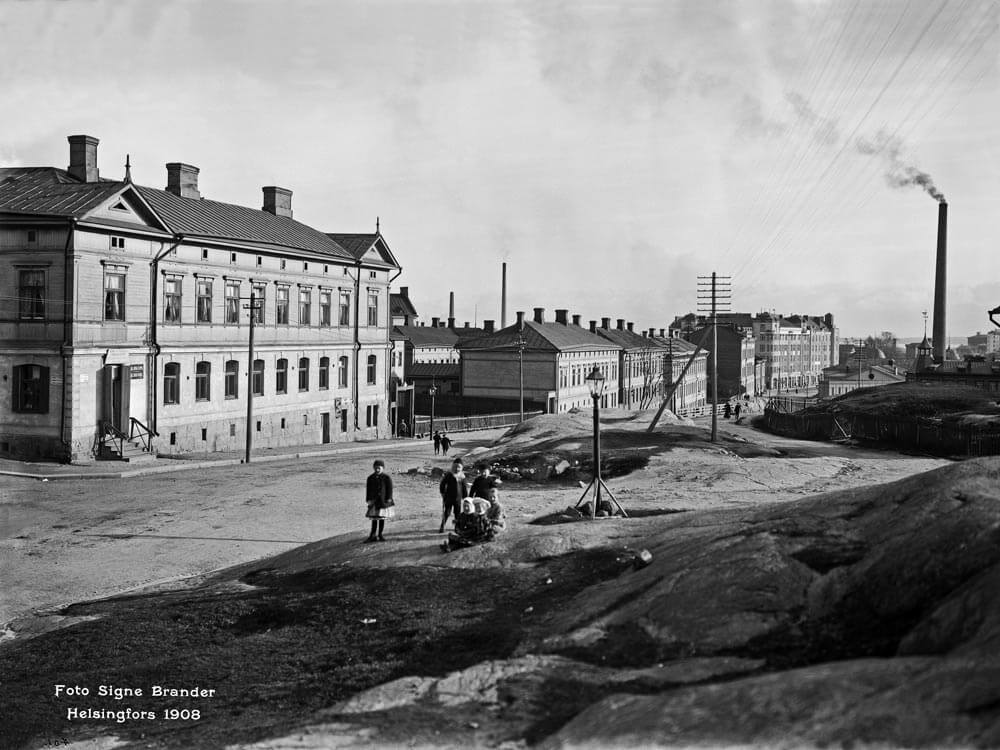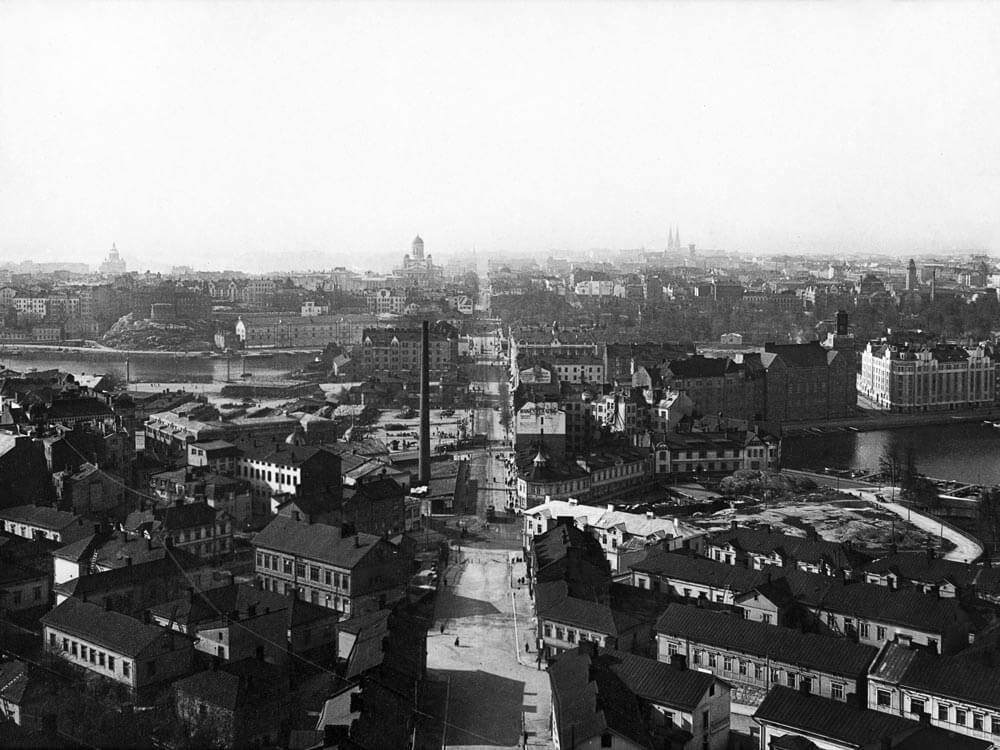Until the mid-1800s the area that is now Kallio was used primarily for farming and grazing. The development of the area accelerated in the latter half of the century, the land was divided into plots, and industry grew up along the shores. The local population consisted of the bourgeoisie, factory owners in their villas, and factory workers who lived as tenants. By the late 1800s and early 1900s, Helsinki had industrialised rapidly and become the centre of Finnish business life. Large numbers of people flocked to the city from the countryside to take up all the jobs.
Only when the Harju farm’s lease expired in 1883 could work begin developing Kallio. In 1887, the City Building Office was given the task of drawing up a zoning plan for the 30-hectare area. The resulting plan was based on a geometrical grid system with long one-way avenues that were numbered from 1 to 5.





Kalliosta tuli merkittävä työvoiman asutusalue. Väestömäärä kasvoi nopeasti, mikä merkitsi suuren asuntokysynnän syntymistä. Kallion linjojen ja Siltasaaren asemakaavat valmistuivat 1890-luvulla. Muualle Kallioon vahvistettiin asemakaava 1901. Rakennukset olivat pääasiassa kaksikerroksisia puutaloja ja -kortteleita. Siltasaaren kivisten kerrostalojen rakentaminen alkoi 1900-luvun alkuvuosina.
Kallio developed into major working class district. The population grew rapidly, which created a massive demand for housing. The city plans for the main avenues and Siltasaari area were completed in the 1890s, while the city plan for the rest of Kallio was approved in 1901. Most of the buildings were two-storey wooden buildings and blocks. Construction of the stone apartment buildings in Siltasaari began in the early 1900s.
The population of Kallio almost doubled within the opening decade of the 20th century to around 18,000 – close to what it is today. The local demographics included an upper class of property owners, a middle class of skilled tradesmen who lived in housing associations, and a lower class of workers who lived as tenants and subtenants.
The residential area of Torkkelinmäki was inspired by the garden suburb ideal and developed during the interwar period along with the rocky cul-de-sacs that are typical of Kallio. The district continued to grow rapidly between the wars, the local population doubling again to over 35,000 by 1939. In subsequent years, the population declined to around 32,000 in 1960, increased again to almost 36,000 by 1965, and then steadily declined to its current level of around 18,000 residents.
The appearance of Kallio changed significantly during the 1950s and ‘60s. Most of the wooden buildings along the main avenues were demolished and replaced by 6- to 9-storey stone buildings. The development of cul-de-sacs was also discontinued. The last remaining wooden block was demolished in the late 1970s to make way for the House of Municipalities (Kuntatalo), closing a chapter on traditional worker housing in Kallio.
By the 1990s, Kallio had been just about fully built up. The focus of development shifted from new buildings to maintaining existing properties, including major renovations of apartments and new facades. The courtyards of many of the buildings are quite remarkable with their old trees and the exposed granite bedrock after which the district is named. Some of the courtyards have themselves been renovated, with new paving and plants.
Kallio was traditionally known as a crowded and mainly working-class district. In the light of statistics, Kallio has changed over the years from a district of tradesmen and their families to one of young singles and the elderly. The proportion of elderly has increased steadily while that of families and children has decreased. It is very illustrative that the local primary school once had 1600 pupils in the 1940s but less than 300 today.
In the early 20th century, almost the entire Jewish population of Helsinki lived in Siltasaari. A hundred years later, immigrants and ethnic food stores contribute to the area’s cosmopolitan appeal. Today Kallio is a popular and trendy district that boasts a strong sense of tolerance and community.
